There are many instances when we come across people practicing yoga with brick-like objects while doing poses, like the Standing Forward Fold (Uttanasana), or using a pillow to do something like the Child’s Pose (Balasana). These objects are called yoga props and they are meant to aid or assist beginners or people with injury, in attaining full benefits of an asana.
Yoga Guru and founder of Iyengar Yoga, B.K.S Iyengar, greatly encouraged the use of yoga props so that practitioners could easily adapt any misalignments, injuries, and muscular tightness when transitioning from one pose to another.
In fact, B.K.S Iyengar is said to have developed the yoga props that are used today, to usher practitioners in the right direction, preventing them from making mistakes when performing yoga poses. According to the great yoga guru, yoga props provide practitioners with self-help, especially when they are practicing on their own.
Today, there are numerous yoga props that are available in the market ranging from yoga mats to yoga bolsters and something as small as yoga socks. All of them devised to provide support, maintain stability, and improve balance during poses which are difficult to attain. Different props serve different purposes and a good understanding of their usage can help you make a better choice as related to your daily practice.
Various Types of Yoga Props
Here are the most common yoga props used in most yoga practices today.
1. Yoga Mats
Yoga mats are most common yoga prop used by every yoga practitioner everywhere. It can be said that a yoga practice is incomplete without a yoga mat. This prop offers users padded, firm, and cushioned surface that helps them define their personal space within a group yoga class.
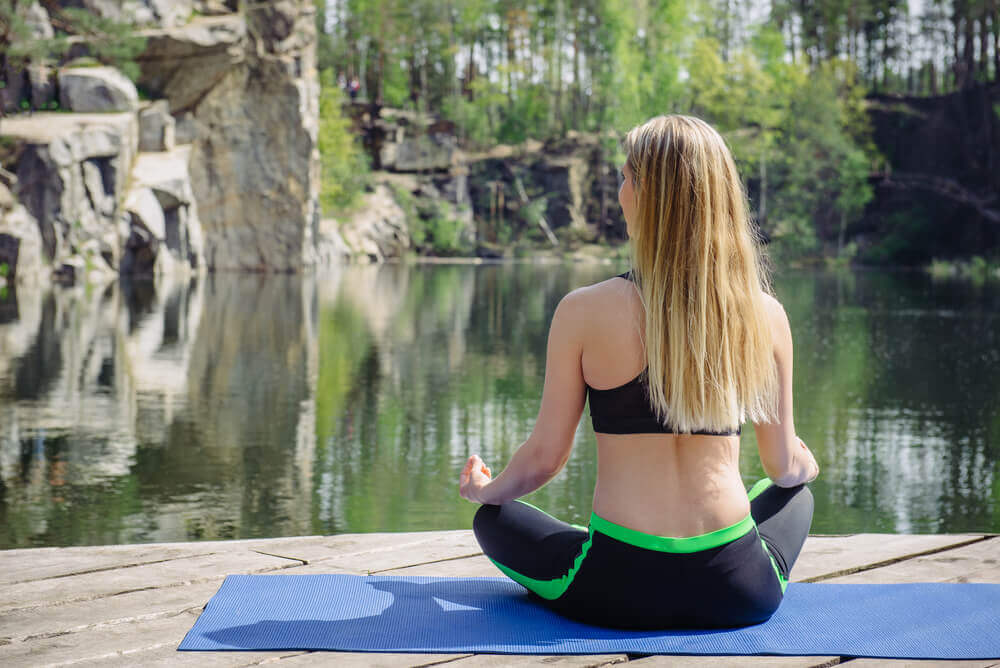
Though some yogis argue that it’s not always necessary to use a mat to practice yoga, ancient yogis suggest otherwise. If analyzed, history depicts that yogis in earlier ages used the animal skin, obtained from dead animals, to practice yoga on. The reason for doing so lies in the belief that using yoga mats prevents the body’s energy from traveling into the earth while doing poses, thus allowing us to reap the full benefit of the practice.
Other than that, yoga mats, alike yoga socks prevent slipping, help in maintaining balance during poses, while also helping practitioners remain grounded throughout the practice.
Factors to Consider When Buying Yoga Mats
The pointers mentioned below will tell you how to pick a yoga mat next time you are out shopping for one. So, make a checklist of all necessary pointers and get going.
- Functionality – Make sure mat offers a reasonable amount of traction for stability and ease of movements. Also, ensure that it is a no slip yoga mat so that it remains in place during practice. If you travel a lot and light and thin yoga mat for travel. For travel, mats with thickness of 1/16 inch are best.
- Material – PVC mats have highest stickiness compared to others. However, this material is deemed as toxic and non-degradable, which makes it a lesser opted choice amongst yogis. Other favorable materials are cotton, jute, natural rubber, padded, and cork mats.
- Thickness – Yoga mats are available in the thickness range of 1/4 inch, 1/8 inch, 1/16 inch. Some of these mats also come in the thickness of 1/32 inch, which is the slimmest version available. Extra thick yoga mats (1/2 inch) are suitable for sensitive practitioners or for those with injuries.
2. Yoga Socks
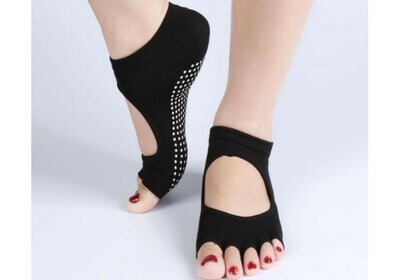 When you perform any kind of physical exercise, your body sweats. This includes your legs and hands as well. If your feet are sweaty and the surface you are practicing yoga does not have a strong grip, there is a high chance of slipping and causing yourselves injuries when transitioning poses.
When you perform any kind of physical exercise, your body sweats. This includes your legs and hands as well. If your feet are sweaty and the surface you are practicing yoga does not have a strong grip, there is a high chance of slipping and causing yourselves injuries when transitioning poses.
Any kind of injury can bring a stop to your yoga practice, maybe for a while, or if the injury is bad, for a very long time. As a devout yoga practitioner, you would not want that. Yoga socks help you overcome this barrier by providing stability and giving you a strong grip on any type of surface.
Yoga socks are different from the normal socks that you wear every day. The soles of yoga socks are lined with lots of rubber that give it a non-skid function without sticking to anything.
These socks are knit like gloves, separating the toes from each other, allowing them to stretch out with ease during the poses, allowing you to achieve what is called “yoga toes”. Yoga socks are comfortable and can also be worn with your shoes or sandals. Other than that they have high absorbency, thus keeping your feet warm even during winters.
Factors To Consider When Buying Yoga Socks
- Functionality – Select socks that have good grip and offer proper stability.
- Material – Cotton socks are the best as they offer higher absorbency.
- Stickiness – Ensure yoga socks have grippy dots on them. Designs and length vary from open toe to full covered toes. You can choose the ones best suited for you.
3. Yoga Blocks
These blocks are small but helpful props, especially for yoga beginners and people with an injury. Yoga poses are undoubtedly beautiful to look at, yet practicing them is a daunting task especially when practitioners have to do poses like Downward Facing Dog, Standing forward fold, or Triangle Pose while ensuring that their spine is straight. Using yoga blocks helps yogis to extend the reach of their arms mostly to the ground.
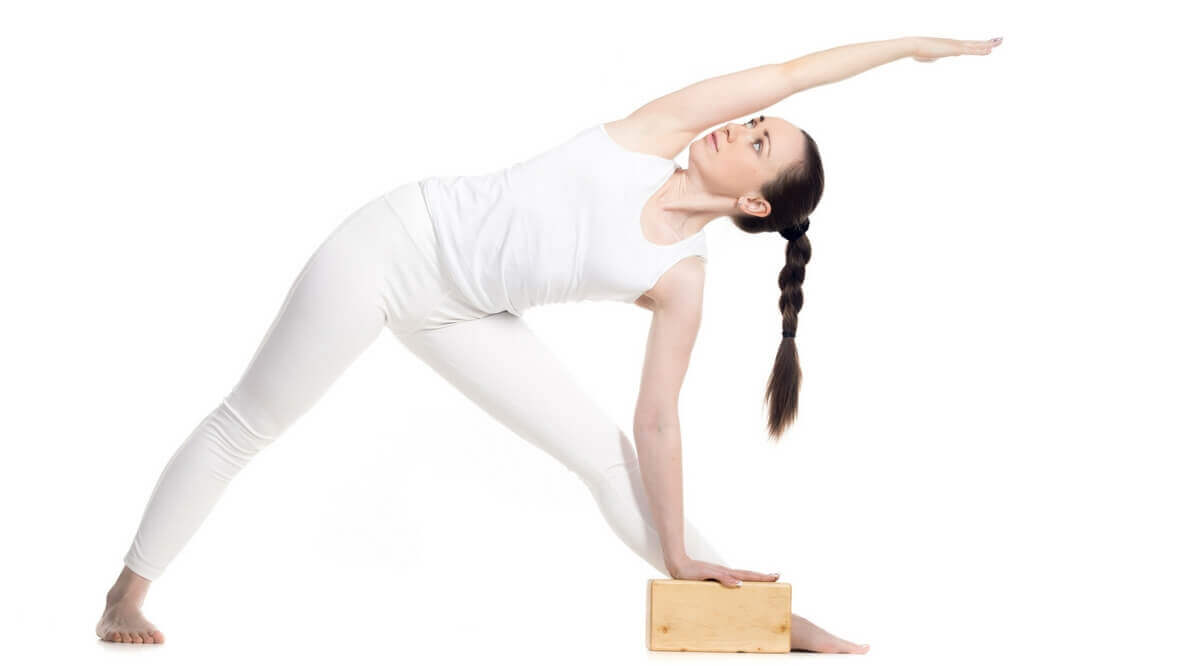
Other than helping with stretching poses, yoga blocks also help in achieving required body positions during certain poses. For instance, when doing Dolphin Pose, thighs need to be kept apart. Usually, beginners tend to close the gap between the thighs. Hence, using a block between the thighs will help to achieve that requirement, up until the time to person gets used to the requirement.
Furthermore, this prop helps people, who are not as flexible, in twisting, turning or extending in certain poses. It provides support to the body’s weight in sitting and standing positions. Moreover, it aids in holding poses for a longer time and enables practitioners to find their balance and center of gravity as required in some poses.
Factors To Consider When Buying Yoga Blocks
- Size – The standard size of yoga blocks is 9 x 4.5 x 3 inches. However, this is not fixed and can vary depending on your arm-length and flexibility.
- Material – Yoga blocks are available in forms of wood, cork or foam. Among the three, wooden blocks are most durable and also the heaviest. Hence, they are best-suited for practicing at home. If you are someone who travels around a lot or mostly practices out, you can choose the other two materials. These, however, are not as durable as the wooden ones.
4. Yoga Straps
Yoga straps are long belt-like props that help to lengthen the arms in poses that require touching the toes or binding the arms. Other than that, straps also help in achieving the right posture while doing certain complex asanas like Dancer’s Pose (Natarajasana).

Furthermore adding to the benefits, straps aid practitioners in stabilizing their joints, enhancing muscle flexibility and length, also enabling traction and space in certain poses.
This prop gives you assistance in reaching your ankles or feet when doing poses like Seated Forward Fold, in case you suffer from tight hamstrings.
It also aids you in bridging the gap between your fingers, behind your back, in Cow Face Pose (Gomukhasana) and in lifting your leg behind you in Dancer’s Pose, when your hips are feeling rigid.
Factors To Consider When Buying Yoga Straps
- Length – The standard length offered for yoga straps is 6 feet. However, 8-feet and 10-feet long straps are also available to accommodate the requirements of taller people.
- Material – Yoga straps are usually made using cotton, nylon or sometimes a blend of both. These straps must not be stretchable, but taut so that you can obtain full benefits of a pose. These straps come with a D-buckle attached to them, which can be made of metal or plastic. It is always best to choose the metal D-buckle straps as they are more durable.
5. Yoga Blankets
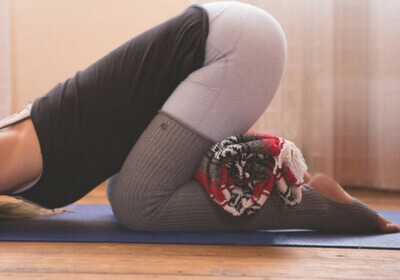 No. Yoga blankets are not meant to keep you warm when it gets cold in class. Yoga blankets are additional props that can be used over a yoga mat to provide certain yoga practitioners extra cushioning, comfort, and support they require maybe due to a past injury or their high sensitivity to pain.
No. Yoga blankets are not meant to keep you warm when it gets cold in class. Yoga blankets are additional props that can be used over a yoga mat to provide certain yoga practitioners extra cushioning, comfort, and support they require maybe due to a past injury or their high sensitivity to pain.
Mostly, blankets are used for giving extra padding to certain areas of the body, where body-weight is focused more like shoulders in shoulderstand pose. Blankets can also be used for providing a higher pedestal for people doing the Lotus Pose (Padmasana) to help straighten their spine or in Thunderbolt Pose (Vajrasana) to decrease pressure on the knees and provide the cushion on the knees.
Factors To Consider When Buying Yoga Blankets
- Size – The standard size of yoga blankets is usually 88 x 65 inches so that it can be easily folded and carried around.
- Material – The best material to choose for your yoga blanket is a mix of cotton and polyester or those made from recycled man-made fibers as they are tight-woven and more durable. Other available options come in wool, polyester, acrylic, and cotton.
6. Yoga Bolsters
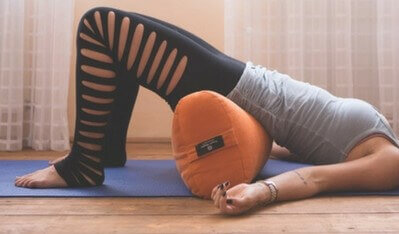 Almost every Indian household has bolsters. Bolsters are cylindrical-length pillows, filled with cotton or cotton fiber, and are enclosed and rounded or tapered towards the ends. They resemble a cylinder and are usually used in households as a decorative piece or for providing arms support.
Almost every Indian household has bolsters. Bolsters are cylindrical-length pillows, filled with cotton or cotton fiber, and are enclosed and rounded or tapered towards the ends. They resemble a cylinder and are usually used in households as a decorative piece or for providing arms support.
But, their functionality does not just end there. Bolsters are easily accessible yoga props and are used during certain asanas as a body pillow. The prime reason yogis use bolsters during yoga poses is to relax the body and allow it to release and open up the stress areas. Yoga bolsters are mainly used for restorative poses, Iyengar style yoga, and prenatal yoga.
Yoga bolsters are extensively used by amateurs, pregnant women, or disabled practitioners so that they can get into asanas without much difficulty, ensure that the body placements are right during the practice.
In case, you are trying to attain deep relaxation during the restorative pose, you can simply place two blocks beneath a bolster for support and rest on it. Furthermore, bolsters aid in softening yoga postures and opening up body while also providing deep support in the process.
Factors To Consider When Buying Yoga Bolsters
- Size – Bolsters are rectangular or cylindrical in shape and come in the sizes of 8 x 27 x 32.5 inches (rectangular) and 9 x 26 x 34.5 inches (cylindrical).
- Weight – The standard weight of a rectangular bolster would be approximately 5 pounds while a cylindrical bolster can weigh up to 7 pounds. The higher the quality of bolsters are, the heavier they weigh and provide support during yoga asanas.
7. Yoga Dowel
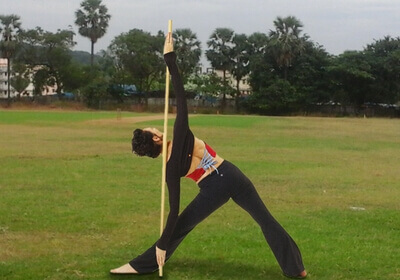 Yoga dowel is nothing more than a simple wooden stick that aids in deepening your poses and stretches in yoga. More than that, a yoga dowel can help you attain perfect body alignment especially when performing poses like Triangle Pose, Half Lord of Fishes Pose, and Staff poses to name a few.
Yoga dowel is nothing more than a simple wooden stick that aids in deepening your poses and stretches in yoga. More than that, a yoga dowel can help you attain perfect body alignment especially when performing poses like Triangle Pose, Half Lord of Fishes Pose, and Staff poses to name a few.
Furthermore, yoga dowel can also be used as a pressure tool for loosening tight muscles, an aid in lifting the chest in standing poses, and a leverage to hold poses for a longer duration.
Factors To Consider When Buying Yoga Dowel
The standard length of a yoga dowel is 5 feet with the diameter measuring between 1 ¼ to 1 ½ inches. This is somewhere equal to a circumference range of 5-7 inches.
Conclusion
The cardinal idea behind using yoga props during practice is to obtain support. Furthermore, it’s not just the beginners, people with lesser flexibility, or those with the injury who need yoga props. These tools can be utilized by anyone. However, many hesitate to do so because they fear that doing so might bring them across as someone who is incapable of learning.
If that is what you have been thinking then it’s time for you to remove that thought and move to a deeper consciousness and understanding that these tools can help you from ruining your yoga practice or getting injured.
Misalignments and forcibly trying to stretch your body will harm your body. The end-result of which will be you not being able to continue with the practice in future. Props were developed with the purpose of helping practitioners attain the wholesome goodness and benefits of practicing yoga and making the journey an enjoyable one.
Yoga is a journey of self-realization and discovery, one step at a time. There has to be no hurry. So, if you are facing any difficulties in your yoga practice, you need support. Scan through the yoga props discussed above and decide which one can best help you. Yoga props are there to help you.
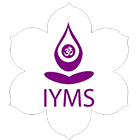
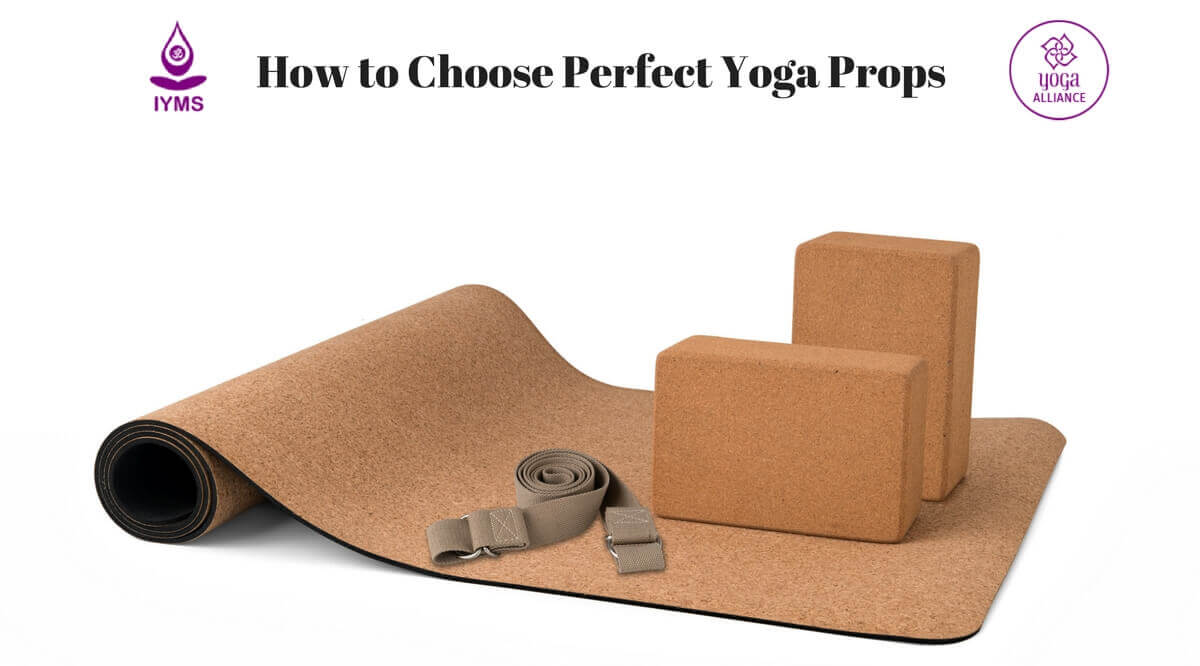
Leave a Reply